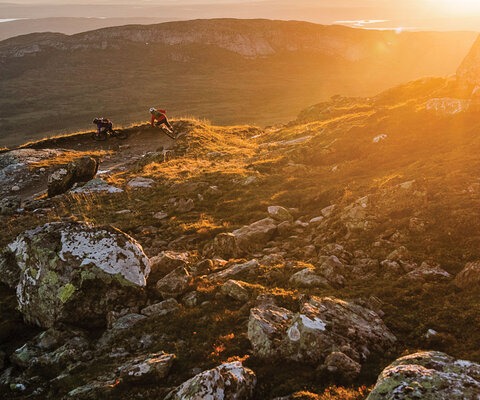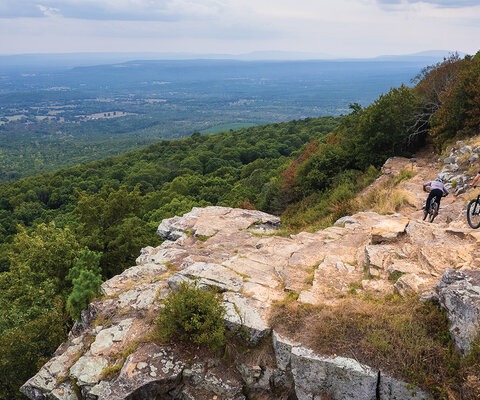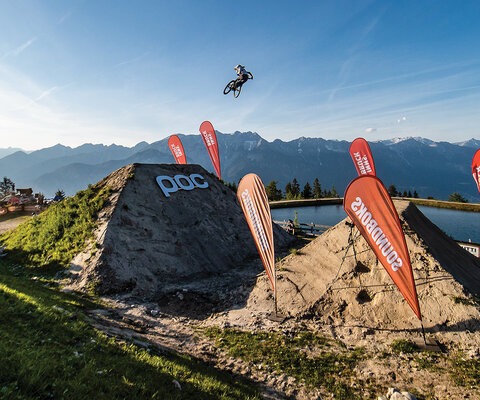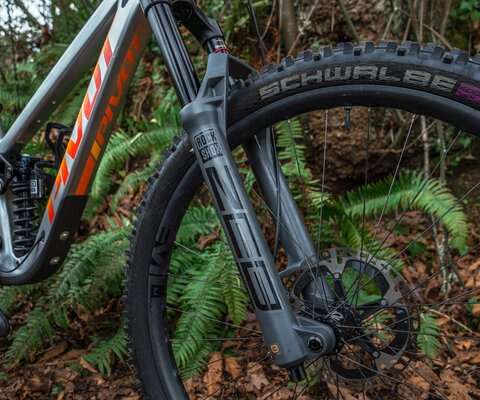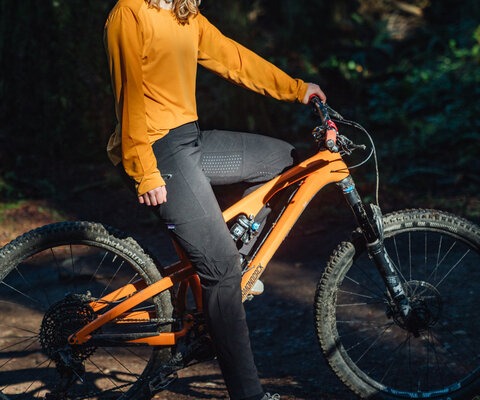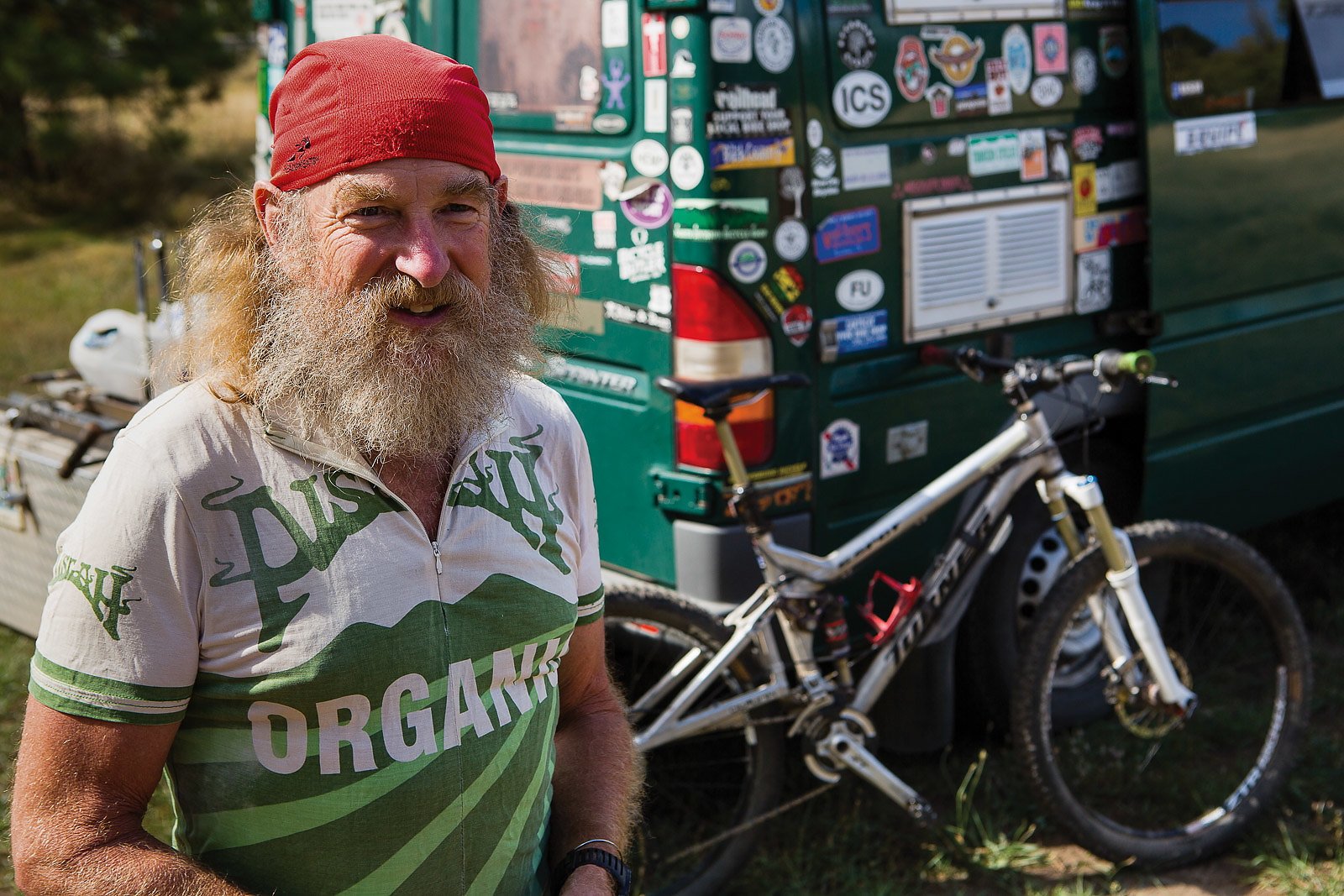
I Stay Where I Choose Craig Bierly and the Perfect Campsite
Words by Craig Bierly | Photos by Ben Gavelda
Back in July of 2008, I handed over the keys to my recently sold house and moved into my 2006 Dodge Sprinter, built out as a custom home-conversion camper. Then I set out to mountain bike the United States.
My goal was to ride in each of the lower 48 states. It took me 11 months and three weeks to pedal once in each, but I did it. More than a half-decade later, I am still living on the road.
During my travels, finding rides has come from many sources—bike shops, trailhead parking lots, the local brewery. Finding spots to spend the night where I will not be asked to leave, however, is up to me. That, in itself, has become a skill.
Living full time on the road is its own life. I stay where I choose. My druthers are fee-free camping on public lands, so finding a sleep spot usually starts with looking at a well-labeled road map. But sometimes beggars (or van-life bikers) can’t be choosers, and along the way I have camped while parked on city curbs, in hospital parking lots and in business parks.
I’ve only been asked to leave two spots by law enforcement, and advised to leave one other. The latter was in Rogers, AR in the parking lot of the Daisy BB gun company. Most Walmarts allow overnight camping, a fallback I have never used—although they do have inside plumbing.
My needs are simple: just a flat spot—and not near a railroad. I discovered this in Medora, ND, when I was awakened by a long freight train rolling by on the neighboring tracks. I moved to the outskirts of town, but at sunrise I was startled by the sound of rushing gas. I looked outside to see scads of hot-air balloons firing up. It was almost as impressive as the Maah Daah Hey trail I rode later that day.
Shoot, I have even camped in multiple airport parking lots, the best being the small ones with no control towers. When I visited Washington state’s San Juan Islands, I spent most nights at airports. One morning at about 8 a.m., a manager greeted me as I was finishing breakfast to tell me I was in violation of the 24-hour parking limit. I told her I drove away each day, so technically I wasn’t breaking any rules. She said, “OK, fine”—she was retiring in a week and would let her replacement deal with it. I still stayed in the lot after that, but was on my way by 7 a.m.

Even minus trains, airplanes or hot-air balloons, I don’t sleep as deeply in these places as I do on public lands. United States Forest Service and Bureau of Land Managment lands—which are mostly west of the Front Range of Colorado—are usually open to free camping, although I spare my rig any long or harsh forest roads that are required to earn a picturesque backcountry sleep spot.
Logging or mining roads can work just fine if they lead to flat spots or even just wide pullouts. Cows might be my neighbors, which is not a problem as my van saves me from sleeping on the ground. One major upside of van life over tent camping: I can park over a pile of beef splatters rather than laying in it.
National parks sometimes have campgrounds, as do some state forests, though both tend to be more restrictive and often limited to developed sites. My advice is to be preemptive. Contact the forest office to learn the rules. Few things harsh your buzz more thoroughly than being woken up and told to leave—although being taken advantage of by drive-by nighttime opportunists is also a disappointing, which is why I don’t park along paved roads, even if there is a good spot.
I have no experience with private campgrounds other than avoiding them. They’re expensive for my needs, and I usually have more neighbors than is comfortable. I do buy showers from them, as $5 is worth a good cleanup. Pay-to-stay public campgrounds tend to be cheaper, roomier alternatives, and some even have showers.
Sometimes my night spot treats me to unexpected views or sounds. There is a place on USFS RD 44, just south of Hood River, OR, with a full panaroma of the east side of Mt. Hood. Or the overlook I found near Washington’s Mt. St. Helens. I woke to the glory of the broken peak, the barren Plains of Abraham hanging on the base like a pumice shroud.
On spring trips through the Southeast, I have enjoyed the song of the whippoorwill, a small bird named for its distinctive melody. They are active only at night, all night, with no snooze button. It’s a great sound, and, in eastern Oklahoma, one sang right outside my open van door.
Once, on a visit to the Syllamo trail system outside of Mountain View, AR, I caught the honeysuckle fields in full blossom. They give off a wonderfully sweet scent, but not enough to mask my stinky body.
Wherever I choose to stay, I’m there for a night and move on. There are few days when I ride from where I slept. I get up, transform my bedroom into my kitchen/dining room, and fix breakfast. Then I clean up, stow everything and drive away, looking for the next trail, the next campground and the next adventure.
